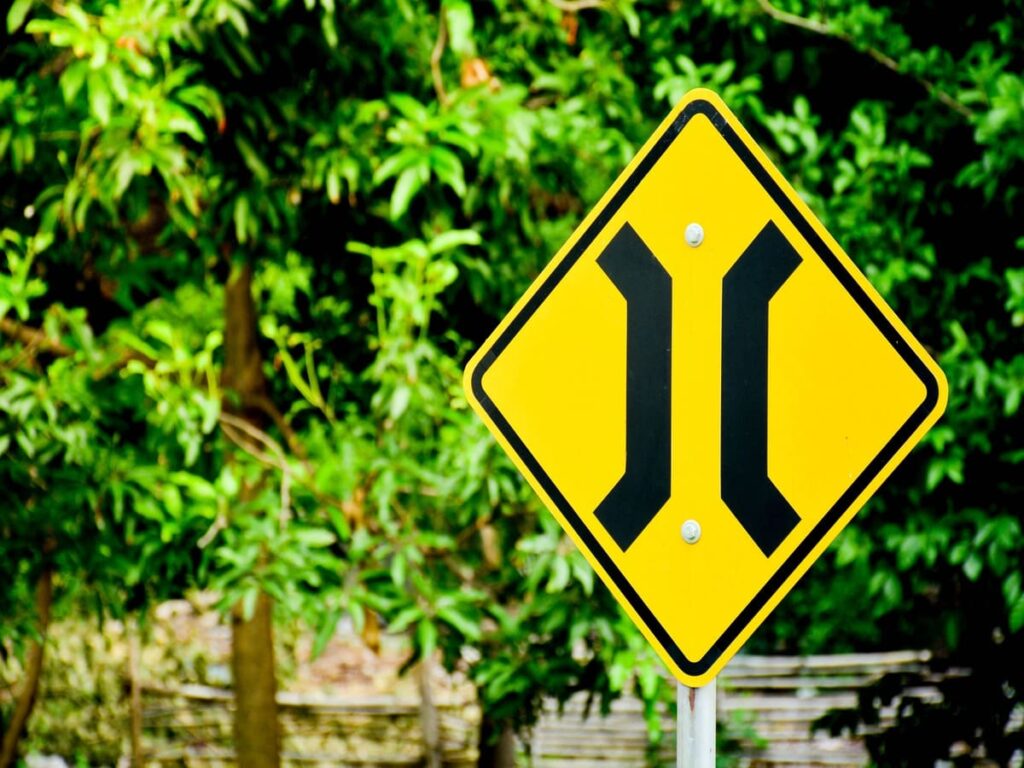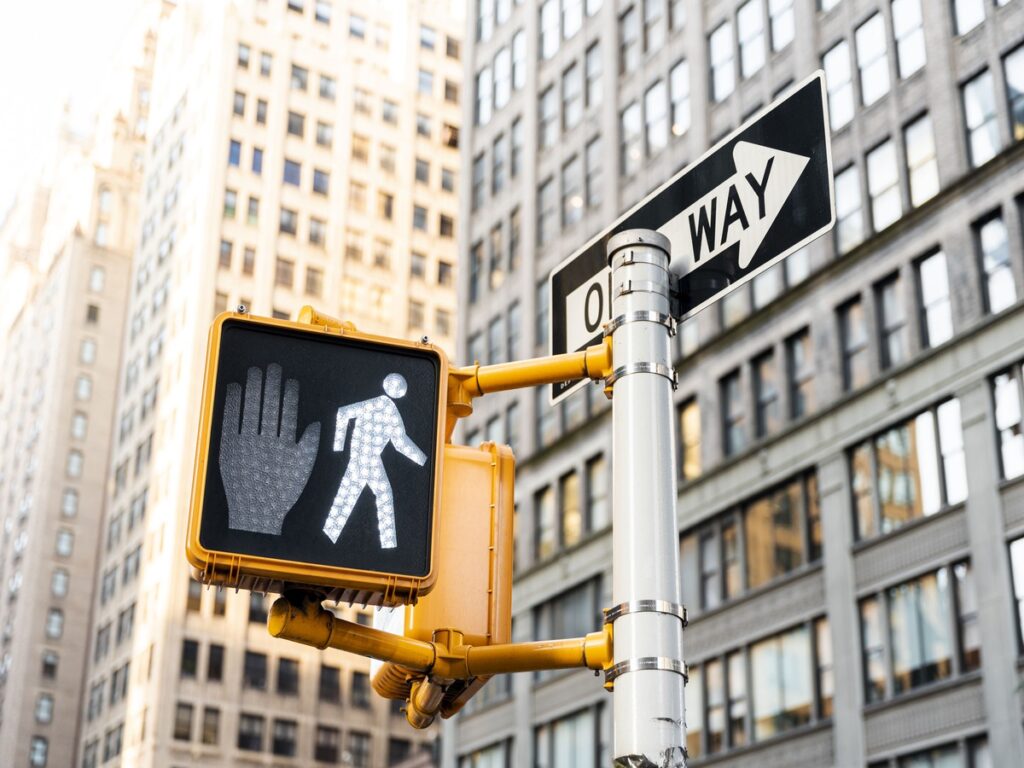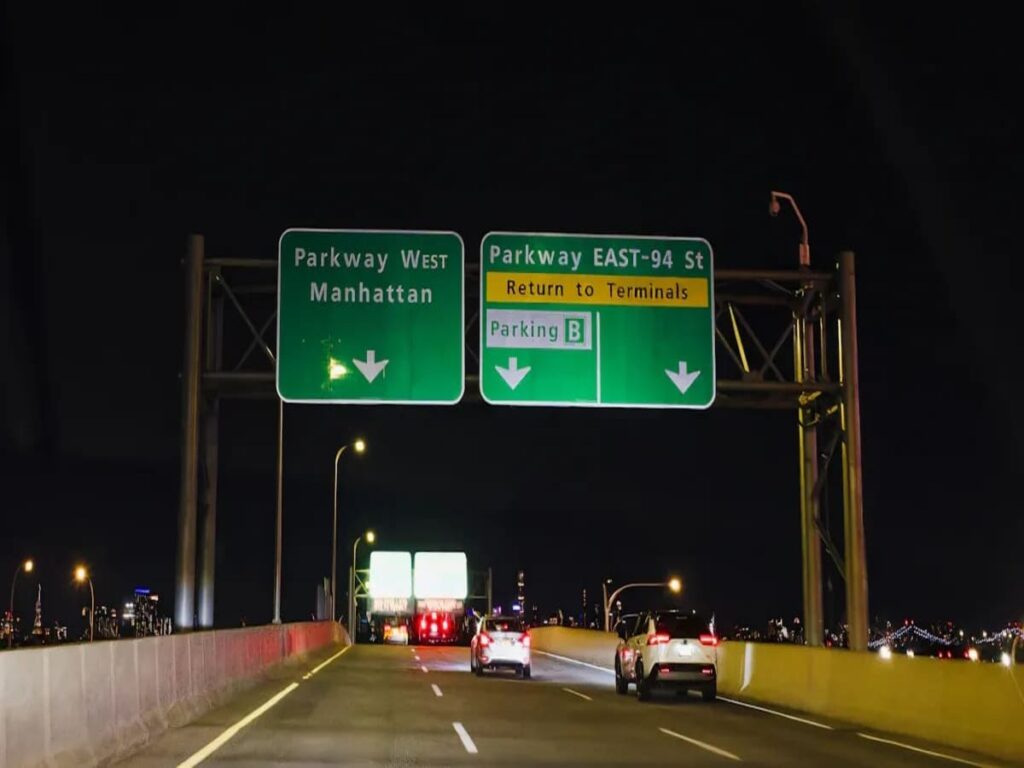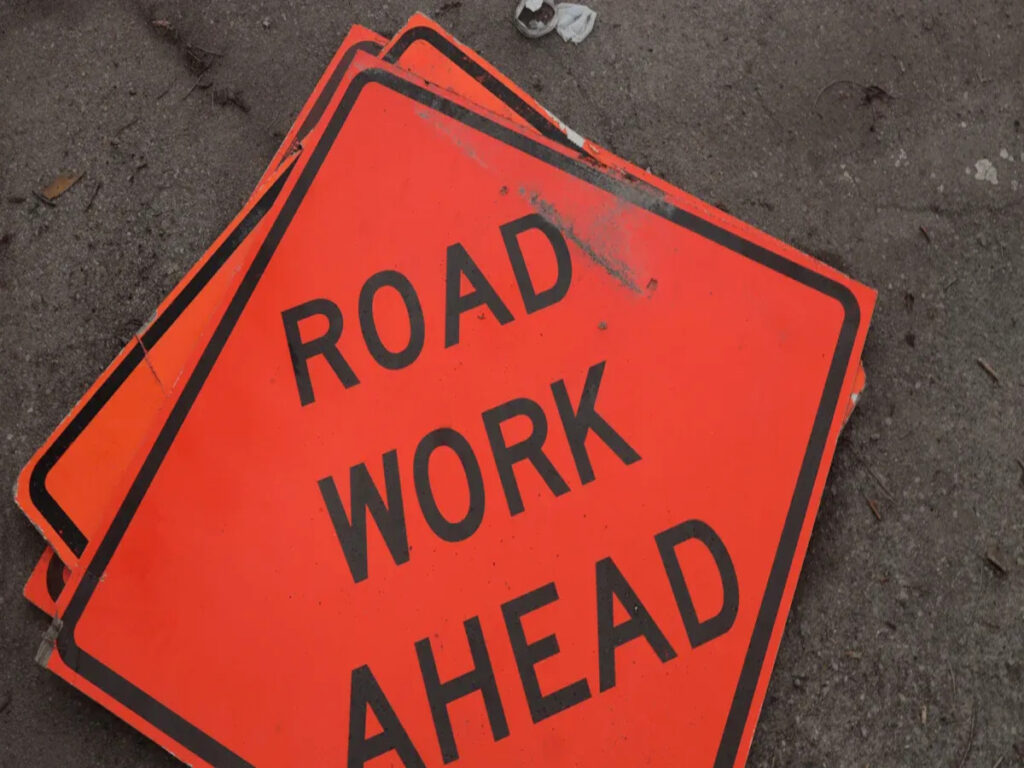
While traveling along the scenic Great Alpine Road near Harrietville, an unexpected issue arose when a cyclist discovered a small hole in the road. Upon investigation, it was revealed that a mine tunnel lay hidden beneath the surface. In response, officials quickly closed the road and initiated urgent repairs to ensure the safety of drivers and workers. In this situation, roadwork cones played a vital role in maintaining order, protecting both the public and road crews, and ensuring a smooth and safe repair process.
Roadwork cones are bright and easy to see. They alert drivers to dangers ahead. Cones assist vehicles in navigating safely around blocked areas, thereby reducing accident risks. They also safeguard emergency workers while they address issues. Research indicates that using cones alongside arrow signs significantly decreases crashes. This demonstrates that cones are excellent for managing traffic in emergencies. Whether it’s construction or sudden repairs, cones maintain road safety and organisation.
Key Takeaways
- Traffic cones are important for keeping roads safe. They warn drivers about dangers and guide them around blocked spots.
- Placing and taking care of cones properly is very important. Good cone placement stops confusion and avoids accidents.
- Using cones during emergencies keeps workers and drivers safe. They make safe areas and help traffic flow better.
- Teaching workers how to use cones well is necessary. This training reduces accidents and keeps everyone safe.
- Learning from events like the Great Alpine Road incident helps improve road safety everywhere. Good traffic control saves lives.
The Great Alpine Road Incident: A Case Study

Discovery of the Hazard
A cyclist riding near Harrietville saw a small hole in the road. What seemed like a tiny issue turned out to be dangerous. Officials found the hole led to an old mine tunnel below. The weak ground was unsafe for cars and people, needing quick action.
Emergency Response Measures
Authorities acted fast to fix the problem. They shut down the road section and began urgent repairs. Experts were called in to make sure the work was done well. Actions included blocking off the area, checking the site, and fixing the damage.
The results of these actions are shown in this table:
| Action Taken | Effectiveness Score |
|---|---|
| Emergency plans for major incidents were created. | 5 |
| Annual risk checks for emergencies were completed. | 4.9 |
| Experts were consulted for better response strategies. | 4.2 |
| Past lessons helped improve current emergency plans. | 3.8 |
These steps show how being ready and acting quickly can save lives.
Role of Roadwork Cones in Traffic Management
Roadwork cones were key in keeping traffic safe during repairs. Their bright colours made them easy to spot for drivers. Cones marked danger zones, keeping cars away from unsafe areas.
Newer traffic cones use smart technology to improve safety even more. These cones track traffic and send alerts to drivers in real time. They also guide cars around work zones, reducing jams and accidents.
Cones also protect workers by marking safe zones around worksites. They stop cars from entering areas with weak ground. By guiding traffic and warning drivers, cones make roads safer for everyone.
The Role of Roadwork Cones in Emergency Roadwork
Key Functions of Roadwork Cones
Roadwork cones are crucial for keeping people safe in emergencies. Their bright colours and reflective surfaces make them easy to see, even at night. They help guide cars, protect workers, and warn drivers about dangers.
- Traffic Guidance: Roadwork cones show cars where to go safely. They create clear routes, reducing confusion and preventing crashes.
- Worker Protection: Cones mark safe zones around dangerous areas, keeping workers safe. They are easy to move, so they can be set up quickly.
- Driver Alertness: Cones warn drivers early, helping them slow down and stay careful. If hit, cones can make noise, alerting distracted drivers and giving workers time to react.
By doing these jobs, roadwork cones keep everyone on the road safe and informed.
Ensuring Safety and Preventing Accidents
Roadwork cones are key to stopping accidents during emergency roadwork. They guide cars away from danger and keep traffic moving smoothly.
Cones act as a visual barrier around unsafe areas. This simple method stops cars from entering dangerous zones. For example, during the Great Alpine Road repairs, road safety cones marked weak ground, keeping drivers at a safe distance.
Cones also give clear warnings to drivers. They help drivers spot work zones early, reducing sudden stops and rear-end crashes.
- Key Benefits of Roadwork Cones:
- Make roads safer for drivers and workers.
- Stop cars from entering dangerous areas.
- Encourage careful driving near work zones.
By guiding traffic and stopping accidents, roadwork cones prove they are vital safety tools.
Protecting Workers and Drivers
Keeping workers and drivers safe is very important during emergency roadwork. Roadwork cones create a safety barrier, protecting everyone from harm.
A study on work-zone safety shows how cones improve safety. It found that using road cones in traffic plans makes workers safer while keeping traffic moving.
| Aspect | Description |
|---|---|
| Study Focus | Looks at how cones improve safety and traffic flow. |
| Data Collection | Uses surveys and data to check how well cones work. |
| Key Findings | Slower traffic improves worker safety but may delay drivers. |
| Decision Support System | Helps plan traffic strategies to keep workers safe and reduce delays. |
Cones mark dangerous areas quickly, lowering risks for workers and drivers. Their fast setup during emergencies ensures unsafe zones are clearly marked, keeping everyone safe.
By protecting workers and warning drivers, roadwork cones make roads safer for all users.
Lessons Learned from the Great Alpine Road Incident
Clear Communication Through Roadwork Cones
Roadwork cones are important for clear communication on roads. They give quick visual signals, helping drivers avoid dangerous spots. Their bright orange colour and shiny strips make them easy to see. This makes it simple to spot danger zones, even in dim light. Drivers can then adjust their speed and direction in time.
- Roadwork cones:
- Help cars avoid unsafe areas.
- Stay visible during day and night.
- Protect emergency workers by creating safe zones.
In the Great Alpine Road incident, cones marked weak ground. They also guided cars away from the repair site. This simple tool kept drivers informed and safe.
Importance of Proper Placement and Maintenance
Placing and maintaining road cones properly is very important. When cones are set up well, they guide traffic clearly. But if cones are placed poorly, they can confuse drivers. This might lead to accidents.
Cones should also be in good shape. Broken or dirty cones are hard to see and less useful. Regular checks and replacing damaged cones keep them effective.
During the Great Alpine Road repairs, cones were placed carefully. They marked danger zones and showed safe routes for cars. This planning avoided problems and kept traffic moving smoothly.
Preparedness for Emergencies
Having enough road safety cones is key for handling sudden road problems. Cones are cheap, easy to store, and quick to use. This makes them perfect for emergencies. They can be used in many situations, like road repairs or big accidents.
| Evidence Type | Description |
|---|---|
| Safety Rules | Traffic cones are required by safety laws for temporary use. |
| Cost Benefits | Cheap, easy to store, and low upkeep make cones practical. |
| Many Uses | Used in sports, warehouses, airports, and emergencies. |
The Great Alpine Road incident showed why being ready matters. Officials quickly used cones to manage traffic and secure the area. This quick action kept workers and drivers safe while reducing risks and delays.
Broader Implications for Road Safety

Global Use of Roadwork Cones
Lessons from the incident to improve worldwide road safety
The Great Alpine Road incident shows how cones save lives in emergencies. Their usefulness goes beyond local areas, offering ideas for global road safety. Many countries face similar issues, like managing traffic during sudden road closures. By using the methods from this incident, communities can improve safety.
Studies reveal poor traffic management causes about 50,000 accidents yearly in the U.S. However, areas with proper systems, including traffic cones, see 25% fewer construction site accidents. This proves cones are vital for reducing injuries and deaths.
| Evidence Description | Statistic/Insight |
|---|---|
| Traffic management systems have seen increased adoption reflecting investment in safety | U.S. Department of Transportation report indicates a marked increase in traffic management systems. |
| Poorly managed traffic scenarios cause accidents | Approximately 50,000 accidents occur annually in the U.S. due to poor traffic management. |
| Reduction in construction site accidents | 25% decrease in accidents where traffic management systems, including cones, are used. |
| Projected global infrastructure spending | Expected to exceed $9 trillion by 2025, boosting demand for traffic cones. |
| Drivers of demand for traffic cones | Rising infrastructure developments and government regulations in North America and Europe. |
With global infrastructure spending set to pass $9 trillion by 2025, cone demand will rise. Governments in North America and Europe are already making stricter rules for safer roads. Learning from incidents like this one can help push for better traffic systems locally.
Improving Emergency Readiness
Adding cones to emergency plans for better traffic control
Emergencies happen suddenly, so being ready is crucial. Traffic cones are simple but effective tools for managing chaos. Their bright colours and reflective strips make them easy to see in any weather. They help create safe zones and guide cars away from danger.
Using traffic cones in emergency plans ensures quicker, more organised responses. For example, during the Great Alpine Road repairs, cones were quickly placed to secure the area. This reduced risks and kept people safe.
Cones can also create temporary lanes or detours, keeping traffic moving during big disruptions. Their flexibility makes them essential for handling emergencies like road collapses or major accidents.
Raising Awareness and Training
Teaching workers and drivers how to use cones properly
Training is key to using roadwork cones effectively. Workers must know the dangers they face and how cones create safe zones. Teaching flaggers to manage traffic and communicate with drivers can lower accident risks.
- Important training steps include:
- Teaching workers about dangers and safety rules.
- Training flaggers to keep order in work zones.
- Showing flaggers how to use clear signals.
Regular training updates help workers stay informed about new safety tips. Supervisors should check traffic plans to ensure they meet safety standards. Watching for near misses can also improve safety plans.
By raising awareness and offering training, cones can be used more effectively. This protects workers and keeps drivers safe on the road.
Traffic cones are crucial for keeping roads safe during emergencies. They help guide cars, protect workers, and warn drivers of dangers. Their bright colours and shiny surfaces make them easy to spot. This is true even in bad weather or low light. For example, during the Great Alpine Road incident, cones stopped accidents and saved lives.
In 2022, 11 emergency responders and 39 road workers died in crashes. Using proper tools like cones can help lower these numbers.
By studying past incidents, we can push for better traffic safety worldwide.
FAQ
Why are traffic cones good for road safety?
Traffic cones are bright and easy to see. Their shiny strips make them visible in dim light. They help drivers avoid dangers and move safely around work areas.
How should traffic cones be set up for best results?
Put cones in straight rows with equal gaps between them. Make sure they can be seen from far away. Check their placement often to keep drivers safe.
Can traffic cones be used in bad weather?
Yes, cones work well in rain, fog, or snow. Their shiny surfaces make them easy to spot. Secure them tightly so wind or rain doesn’t move them.
Are there different types of cones for special jobs?
Yes, cones come in different sizes and shapes. Small cones are used indoors or in slow traffic areas. Big cones are better for highways or fast-moving cars. Some cones have smart features to manage traffic better.
Why are cones useful during emergencies?
Cones quickly mark safe zones and guide cars away from danger. They are light and easy to move, so teams can use them fast. This keeps traffic flowing and protects everyone during sudden problems.



















